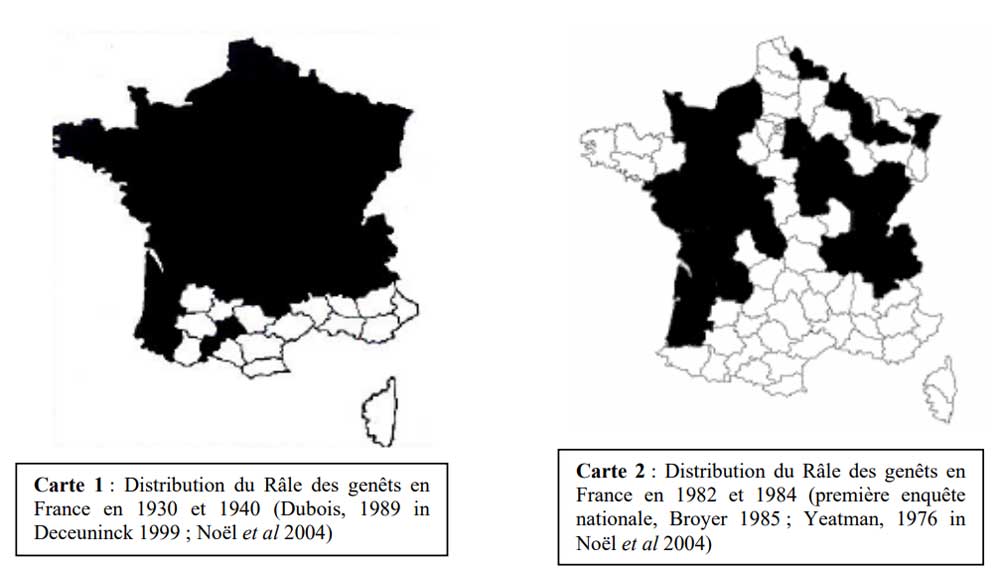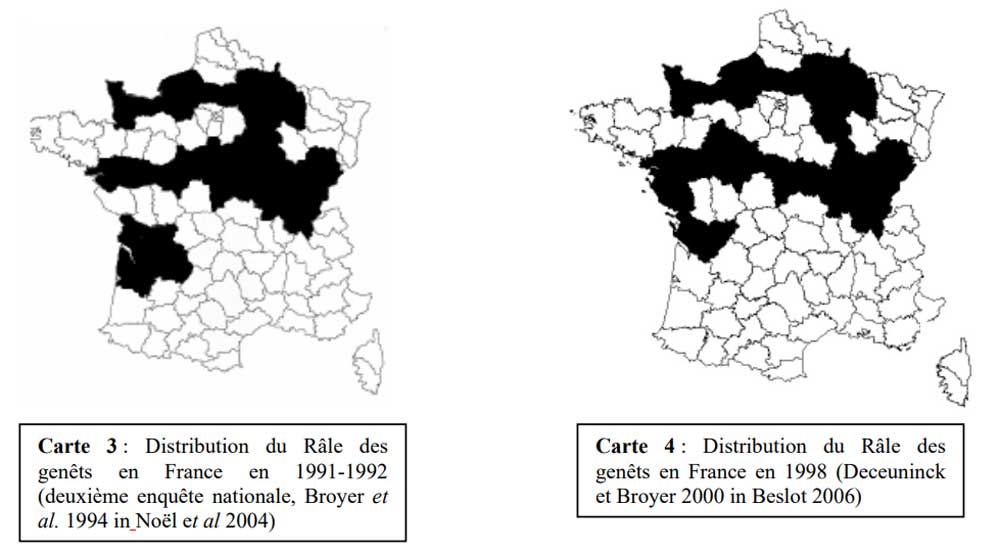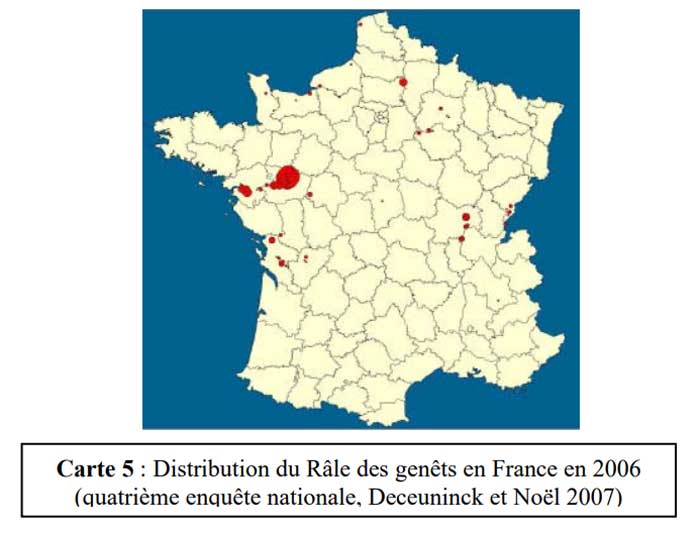Corncrake
Crex crex
Râle des genêts
The Corncrake is one of Europe’s globally threatened birds having seen a massive decline since the 1940's that accelerated from the 1980's.
The Corncrake arrive at their breeding grounds in April/June after over wintering in Sub Saharan Africa, the females arriving a little later than the males. Corncrakes have short term relationships, a female will be attracted to a singing male when a close association takes place until egg-laying; at this time the male moves to another area where he recommences his singing to attract another female. Given the great difficulty in observing these birds listening for singing males is the principle method used to indicate presence, however solitary males will sing anywhere that there is suitable habitat and as such isn't in itself a reliable indicator that females are present.
The nest is constructed on the ground from stems, twigs and leaves in what is a fairly specific habitat, vegetation needs to be tall enough (20cm’s or more) to enable them to conceal themselves but not so dense as to inhibit their mobility. In general they choose habitats that are mowed or subject to seasonal flooding, avoiding grassland that is left to fall on itself or that is to dense as a result of being nutrient rich. Grassland which is grazed in autumn/winter and left to grow in spring is useful, also abandoned land which is nutritionally poor and therefore sparsely covered will be used, this is a temporary situation as land left unmanaged will return to scrub and the area will be unusable.
On average 10 eggs are laid, after hatching the young soon leave the nest and are feed by the female foraging in an area of up to 200 metres from the nest, about half survive to reach independence at 2 weeks old. Young birds are able to fly at 5 weeks. It is assumed that two clutches per female in one season may be normal but this is inhibited by lack of suitable habitat after early mowing.
Diet is mainly small invertebrates, slugs, snails, and occasionally small fish.
Corncrakes lose all their feathers at the same time during the moult which takes place in July / August prior to their migration departure. This leaves the birds without feathers and unable to fly for two weeks
The reasons for its catastrophic decline which began around the beginning of the 20th century and accelerated in the 1950’s are clearly understood being directly related to changes in land use and agricultural methods.
With the arrival of mechanisation came the ability to mow more hay or silage in a shorter amount of time giving the chicks little or no chance to escape the cutting blades. The speed of this process also means that all of the cutting is finished sooner, that which may in the past have taken months cutting by hand or using horse drawn equipment is now completed in a matter of days leaving no available nesting habitat; in addition a large amount of previously suitable habitat has been converted to arable production, principally in France this is for maize and sunflower cultivation. Wetland drainage schemes have also removed a substantial amount of habitat. Fragmentation of habitat also makes the Corncrake more vulnerable to predatory birds and carnivorous mammals, including cats, when located in small areas of cover and when they have to move across open spaces, at the time of mowing for example.
There is no strong evidence that pesticides or pollution play a major role, although it is possible that food supply could be affected by pesticide use and fertilisers may produce denser vegetation.
Corncrakes are a fully protected species
There are also collisions with high tension cables and road kills.
Important concentrations for this species in France are Basses Vallées Angevines (BVA), Loire Valley, Charente Valley, Soane Valley and Carentan marshes in Normandy.
Répartition du Râle des genêts en France en 1930-1940 ; 1982-1984 ; 1991-1992 ; 1998 ; 2006





